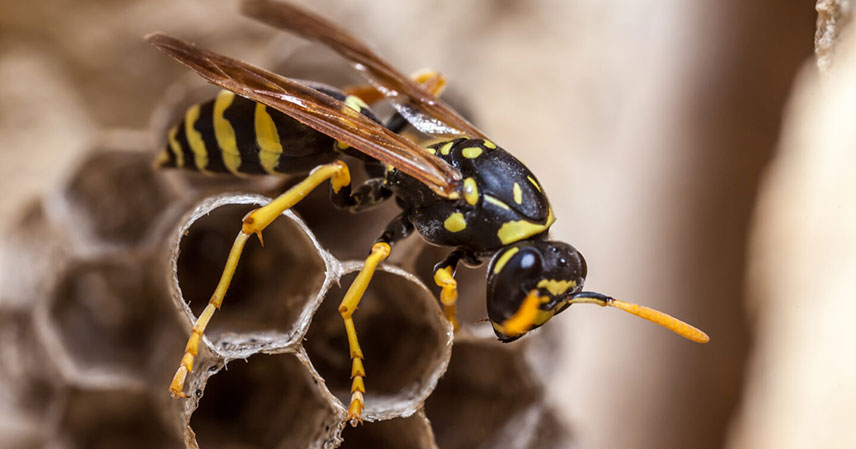The discovery of radioactive wasp nests near the Savannah River Site (SRS) in South Carolina has sent ripples of concern through the scientific and environmental communities. This isn’t just another bizarre news story; it highlights the enduring legacy of Cold War nuclear activities and the potential for unforeseen consequences of radioactive contamination. The presence of these nests raises critical questions about the extent of environmental contamination and the long-term impact on the ecosystem.
The initial report, published by the US Department of Energy, detailed the finding of a single radioactive wasp nest. However, further investigations have revealed that at least four nests exhibit significant levels of radioactive material, raising serious concerns about the scale of the problem.
What Happened? 📝
The story begins with the discovery of a wasp nest near a tank used for storing nuclear waste at the SRS. This facility, a key player in the US nuclear program during the Cold War, has a long history of handling radioactive materials. The nest showed alarmingly high levels of beta and gamma radiation, exceeding federal regulatory limits by a significant margin. The initial report from the Department of Energy attributed the contamination to “onsite legacy radioactive contamination not related to a loss of contamination control,” suggesting existing contamination from past activities.
However, the discovery of multiple radioactive nests significantly complicates this explanation. It suggests a wider dispersal of radioactive material than initially suspected, raising concerns about the potential for further contamination and its impact on the environment and potentially, human health.
Understanding the Contamination ☢️
The report mentioned a contamination level of “100,000 dpm/100 cm2 beta/gamma.” Let’s break that down: dpm stands for disintegrations per minute, a measure of radioactivity. This high reading indicates a substantial amount of radioactive material present in the wasp nest. Beta and gamma radiation are both forms of ionizing radiation, meaning they can damage DNA and potentially lead to health problems with prolonged exposure.
The fact that wasps, insects known for their industrious nest-building, have incorporated this radioactive material into their homes suggests that the contamination is widespread enough to be readily accessible to them. This raises questions about the extent of the contamination in the surrounding soil and vegetation.
The Environmental Impact 🌎
The presence of radioactive wasps is a stark reminder of the long-term consequences of nuclear activities. Radioactive materials can persist in the environment for decades, even centuries, affecting the local ecosystem in unpredictable ways. The wasps themselves may suffer from the radiation, leading to mutations or reduced population numbers. Furthermore, the potential for the spread of contamination through the wasps’ activities (e.g., foraging, transporting materials) is a significant concern.
Further investigation is crucial to determine the full extent of the contamination and the potential risks to the surrounding environment and human populations. This includes a comprehensive assessment of soil and water samples, as well as a detailed study of the wasps’ behavior and their role in the ecosystem.
The Ongoing Investigation and Future Steps 🔎
The Department of Energy is currently conducting further investigations to fully understand the extent of the contamination and its source. This includes mapping out the contaminated area, analyzing soil and water samples, and potentially studying the wasps themselves to determine the extent of their exposure and potential health effects. The findings of this investigation will be crucial in determining the necessary remediation steps and preventing future incidents.
This incident serves as a powerful reminder of the importance of responsible handling and disposal of radioactive materials. Stringent safety protocols and ongoing monitoring are vital to mitigate the risks associated with nuclear waste and prevent similar incidents from occurring in the future. The long-term health of the environment and surrounding communities depends on it.
Key Takeaways 🔑
- At least four radioactive wasp nests have been discovered near the Savannah River Site.
- The contamination levels significantly exceed federal regulations.
- The incident highlights the long-term environmental consequences of nuclear activities.
- Further investigation is underway to determine the full extent of the contamination and its impact.
- The incident underscores the need for stringent safety protocols and ongoing monitoring of nuclear sites.
The discovery of radioactive wasp nests at the Savannah River Site is a concerning development that demands immediate and thorough investigation. The long-term implications for the environment and human health remain to be seen, but this incident serves as a stark reminder of the enduring legacy of the Cold War and the importance of responsible environmental stewardship.
Source: Four radioactive wasp nests found on South Carolina nuclear facility



